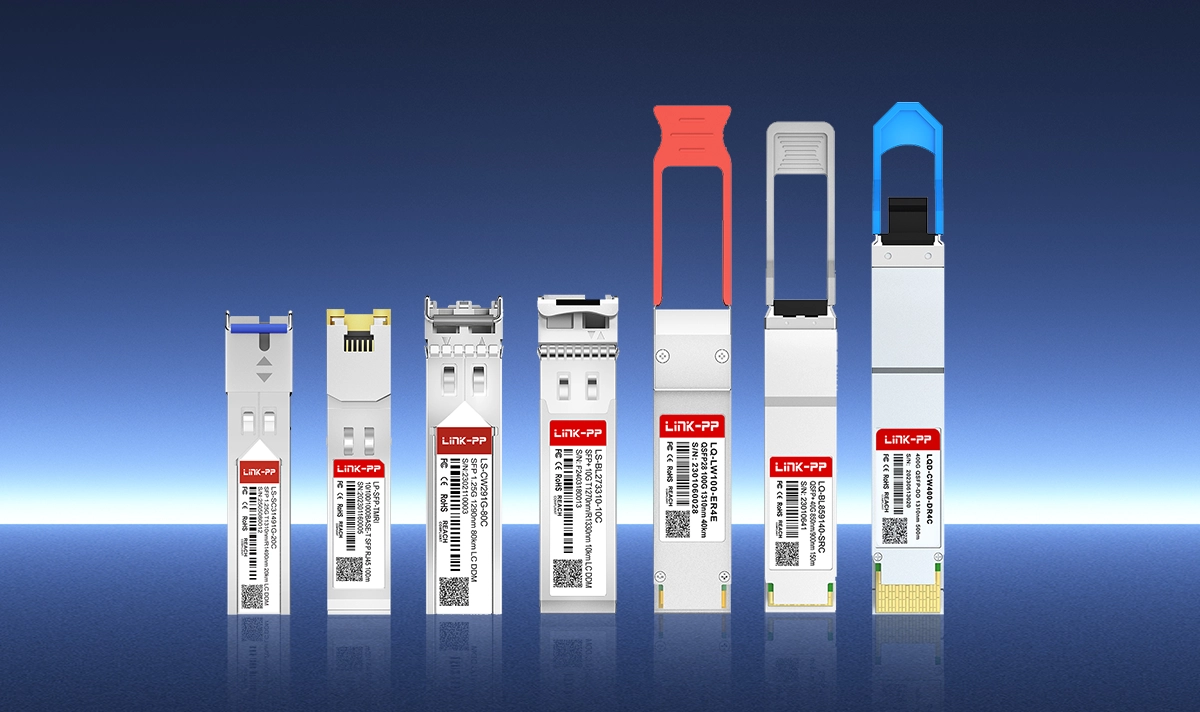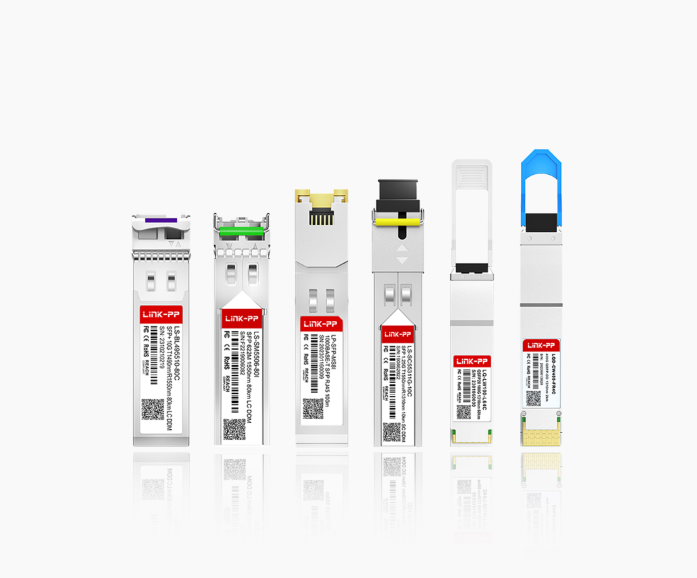
In today’s digital age, Content Delivery Networks (CDNs) are the backbone of fast, reliable online experiences, from streaming videos to e-commerce. But behind the scenes, optical modules play a critical role in ensuring seamless data transmission. In this post, we’ll explore how these tiny yet powerful components optimize CDN performance, reduce latency, and support high-bandwidth demands. We’ll also dive into the specifics of optical modules, including innovative solutions like those from LINK-PP, and highlight why they’re essential for modern CDN infrastructure. Whether you’re a network engineer or a tech enthusiast, you’ll gain insights into the unsung heroes of content delivery.
🚀 Key Takeaways
Optical modules help streaming work fast and smooth. They move data quickly between servers and users.
There are different optical modules, like QSFP-SR4 and SFP28. Each one helps with certain data needs. Picking the right module makes the network work better.
Optical fiber technology is better than copper cables. It gives faster speeds and can carry more data. This makes things better for users.
800G optical modules help with the need for more speed. They are used in cloud services and AI apps. These modules move data fast and make things work well.
It is important to plan for integration and compatibility. Make sure all devices work together. This helps stop problems with moving data.
🚀 What Are Content Delivery Networks (CDNs)?
CDNs are distributed networks of servers that deliver web content—such as images, videos, and scripts—to users based on their geographic location. By caching data closer to end-users, CDNs minimize latency, improve load times, and handle traffic spikes efficiently. For instance, when you stream a movie on Netflix, a CDN ensures the data comes from a nearby server rather than a distant origin, enhancing user experience. According to industry reports, CDNs handle over half of global internet traffic, underscoring their importance in a connected world.
Key benefits of CDNs include:
Reduced Latency: Faster content delivery by shortening the data travel path.
Scalability: Handling millions of requests without bottlenecks.
Reliability: Distributed architecture prevents single points of failure.
Security: DDoS protection and encryption features.
However, achieving these advantages relies on robust hardware, and that’s where optical transceivers come into play.
🚀 The Role of Optical Modules in CDNs
Optical modules, also known as optical transceivers, are devices that convert electrical signals into light waves (and vice versa) for transmission over fiber optic cables. In CDNs, they enable high-speed data transfer between servers, data centers, and edge locations. Think of them as the “messengers” that ensure data packets travel quickly and accurately across long distances.
Why are optical modules so crucial for CDNs?
High-Speed Data Transmission: They support rates from 1G to 400G and beyond, meeting the demands of bandwidth-intensive applications like 4K streaming and cloud gaming.
Low Power Consumption: Compared to copper-based solutions, optical modules are energy-efficient, reducing operational costs for CDN providers.
Long-Distance Capability: They facilitate connections over kilometers without signal degradation, ideal for global CDN networks.
Compatibility: Modules like SFP, QSFP, and SFP28 integrate seamlessly with switches and routers.
For CDNs, optimizing optical modules for low-latency content delivery is a game-changer, especially as 5G and IoT expand data volumes. In fact, a well-designed optical module can cut latency by up to 30%, making it a key factor in improving CDN performance metrics.
🚀 Understanding Optical Modules: A Deep Dive
This section focuses on optical transceivers themselves—their types, functions, and how they fit into CDN ecosystems. Optical modules are categorized based on form factors, data rates, and transmission distances. Common types include:
SFP (Small Form-factor Pluggable): Supports up to 1.25G, used for short-range connections.
SFP+: Enhances SFP with speeds up to 10G, popular in data center interconnects.
QSFP28: Designed for 100G applications, ideal for high-density CDN nodes.
CFP8: For 400G networks, supporting future-proof scalability.
How do they work? Inside, a laser diode converts electrical data to light, which travels through fiber optics to a receiver that converts it back. This process enables high-speed data transmission in CDNs with minimal loss. Key parameters to consider include wavelength (e.g., 850nm for multi-mode, 1310nm/1550nm for single-mode), power consumption, and temperature tolerance.
For CDN operators, selecting the right optical transceivers involves balancing cost, performance, and compatibility. That’s where brands like LINK-PP shine. Their modules are engineered for reliability and efficiency, making them a top choice for optimizing CDN infrastructure. For example, the LINK-PP QSFP28 Series offers a robust solution for 100G applications, with features like low power draw and extended temperature ranges. This model is particularly suited for edge CDN deployments, where stability and speed are paramount. By integrating LINK-PP optical modules, providers can achieve enhanced CDN reliability and speed, ensuring users enjoy buffer-free experiences.

To illustrate, here’s a comparison table of common optical module types used in CDNs:
Module Type | Data Rate | Max Distance | Typical Use in CDNs | Key Advantages |
|---|---|---|---|---|
SFP | 1G to 1.25G | Up to 10km | Edge caching, local server links | Low cost, easy deployment |
SFP+ | 10G | Up to 120km | Data center interconnects | High speed, compact size |
QSFP28 | 100G | Up to 80km | Core network aggregation | Scalability, energy efficiency |
CFP8 | 400G | Up to 10km | High-density CDN hubs | Future-proof, supports massive data loads |
This table shows how different modules cater to various CDN layers, from edge to core. For instance, LINK-PP’s QSFP28 modules are often deployed in aggregation points to handle traffic from multiple SFP+ links, demonstrating their versatility.
🚀 How Optical Modules Enhance CDN Performance
Integrating advanced optical modules directly impacts CDN efficiency. Here’s how:
Latency Reduction: By enabling faster signal conversion, modules like the LINK-PP LQ-LW100-LR4C minimize delays, critical for real-time applications like video conferencing.
Bandwidth Management: High-capacity modules support multicast and unicast streams, optimizing content distribution.
Energy Efficiency: With lower power consumption, CDN providers can reduce carbon footprints and operational costs—a win for sustainability.
Scalability: As data grows, pluggable modules allow easy upgrades without overhauling infrastructure.
Case in point: A recent study found that CDNs using optimized optical modules saw a 25% improvement in throughput during peak hours. This ties into broader trends like optical modules for CDN performance optimization, where innovations in photonics drive next-gen networks.
🚀 Conclusion
Optical transceiver modules are indispensable to modern CDNs, enabling the speed, reliability, and scalability that users expect. From basic SFP units to advanced LINK-PP QSFP28 modules, these components form the connective tissue of digital content delivery. By understanding their role and choosing quality products, CDN providers can stay ahead in a competitive market. As technology advances, the synergy between CDNs and optical modules will only grow stronger—paving the way for a faster, more connected world.
We’d love to hear your thoughts! Share your experiences with optical modules in the comments below. For more insights on optimizing CDN infrastructure, subscribe to our blog.
🚀 FAQ
What is an optical module?
You use an optical module to send data as light. The light travels through fiber cables. This device helps your network move information fast. It also keeps your data safe.
Why do CDNs need optical modules?
CDNs use optical modules to deliver videos and files quickly. They also help with cloud services. These modules let your data travel far without slowing down.
How do optical modules improve streaming?
Optical modules make things faster and cut down on delays. You can watch videos without waiting for them to load. Downloads finish quickly. Your time online feels easier.
Can you upgrade your network with new optical modules?
Upgrade Step | Benefit |
|---|---|
Add new modules | Faster speeds |
Use fiber cables | Longer distance |
You can make your network better by adding new optical modules. This gives you faster and stronger performance.




